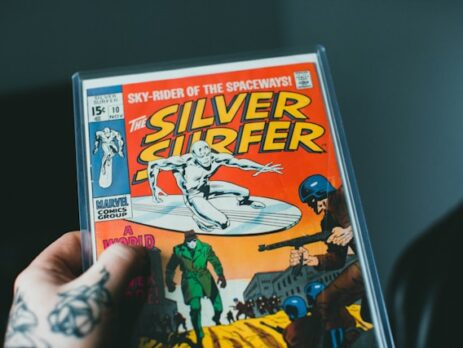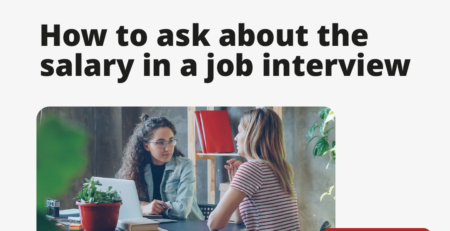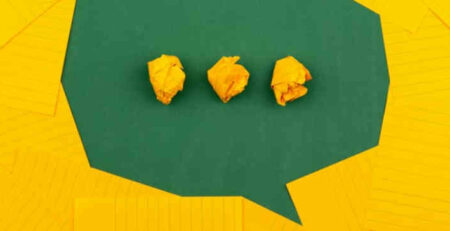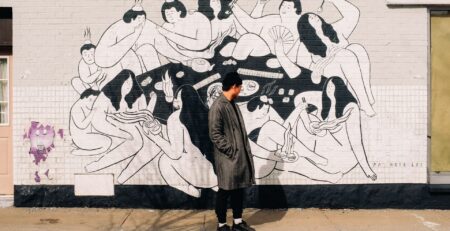Illustration Domination: Hiring Tips for Comic Book Artists
The comic book industry, with its rich visuals and compelling narratives, relies heavily on the talents of skilled artists to bring characters and stories to life. Hiring the right comic book artist is crucial for the success of any publication, whether it’s a mainstream superhero saga or an independent graphic novel. This guide provides essential tips and insights for anyone looking to hire comic book artists, ensuring that they find a professional whose skills align perfectly with their project’s needs.
Understanding the specific requirements of comic book art is the first step in the hiring process. This includes recognizing the importance of both storytelling ability and artistic skill. A good comic book artist must be able to convey complex narratives through images, making character expressions and dynamic layouts crucial components of their skill set.
Another important aspect is the artist’s ability to work within various styles. Comic books can range from highly detailed and realistic to simple and cartoonish. Knowing the style that best suits the narrative of your project is key to selecting the right artist. This decision will directly impact the visual appeal and readability of the comic.
When it comes to sourcing candidates, there are numerous platforms and communities online where talented comic book artists can be found. Websites like DeviantArt, Behance, and ArtStation host portfolios of artists from around the world, providing a broad pool of talent from which to choose.
Once potential artists have been identified, the interview process begins. This is a critical step where you can assess not only the artist’s compatibility with the project but also their professionalism and communication skills. Discussing previous projects, understanding their creative process, and reviewing their portfolio in-depth will provide valuable insights into their suitability for your comic book.
It’s also beneficial to consider the logistical aspects of working with a comic book artist. This includes their availability, adherence to deadlines, and flexibility with revisions. Establishing a clear contract that outlines expectations and deliverables can help prevent misunderstandings and ensure a smooth workflow.
Compensation is another crucial factor to discuss. Comic book artists are skilled professionals, and their work should be valued accordingly. Understanding industry standard rates and being transparent about budget constraints from the beginning can help in negotiating a fair price that satisfies both parties.
For those looking to hire remotely, managing a comic book project can be challenging. Utilizing tools and platforms that facilitate collaboration and communication is essential. Regular check-ins and updates can also help keep the project on track and ensure that the final product aligns with the initial vision.
In addition to these practical tips, fostering a positive working relationship with the artist can contribute significantly to the project’s success. Respect for their artistic vision and input, combined with clear and consistent communication, can create a productive and creative environment.
Finally, it’s worth considering the broader impact of your collaboration. A successful comic book project can lead to ongoing work and referrals, which are beneficial for both the publisher and the artist. Building a network of reliable, talented artists can streamline future projects and enhance the overall quality of your publications.
In conclusion, hiring a comic book artist involves a combination of artistic appreciation, logistical planning, and professional interaction. By following these tips, publishers and creators can form successful partnerships that bring captivating visual stories to eager audiences.
What are the key qualities to look for in a comic book artist?
When hiring a comic book artist, several key qualities should be considered to ensure that the artist can meet the demands of your project. These qualities include a strong sense of visual storytelling, versatility in style, technical skill in drawing and composition, consistency in quality and output, and the ability to meet deadlines. An artist’s passion for the genre and their professional attitude towards collaboration and feedback can also significantly impact the success of a comic book project.
Visual storytelling is crucial because the essence of comic books is to tell stories through pictures. An artist must be able to convey the narrative and emotions effectively through their artwork. This requires an understanding of how to use angles, framing, and panel progression to guide the reader’s eye and evoke the right feelings.
Versatility in style is important because it allows the artist to adapt to the specific aesthetic needs of the project. Whether the project requires a gritty, realistic look or a more stylized, cartoonish feel, the artist must be able to deliver art that fits the story’s tone.
Technical skill in drawing and composition cannot be overlooked. The artist must have a strong foundation in anatomy, perspective, and environmental design to create compelling and believable scenes. Good composition skills are also essential for creating dynamic layouts that enhance the storytelling.
Consistency in quality and output ensures that the comic book maintains a uniform appearance and quality throughout. This is crucial for maintaining the reader’s immersion and satisfaction with the series.
The ability to meet deadlines is critical in the publishing industry, where delays can affect not only the release schedule but also marketing and sales efforts. An artist who can produce high-quality work in a timely manner is a valuable asset to any comic book project.
Finally, a passion for the genre can greatly influence an artist’s dedication to a project. An artist who is enthusiastic about the work will likely go the extra mile to ensure that every panel is as perfect as possible. Additionally, their professional attitude towards receiving and incorporating feedback is essential for a collaborative environment, which is often necessary for creative projects.
Assessing these qualities can be done through careful review of the artist’s previous work, references, and through the interview process. Asking for sample pages or a trial project can also provide insights into how well the artist might handle your specific project.
Overall, the right comic book artist will bring a combination of artistic talent, professional reliability, and a collaborative spirit to your project, ensuring that the final product not only meets but exceeds expectations.

How do I evaluate a comic book artist’s portfolio?
Evaluating a comic book artist’s portfolio is a critical step in the hiring process. The portfolio provides a direct insight into the artist’s skills, style, and versatility. When reviewing a portfolio, it’s important to look for a range of factors that indicate the artist’s suitability for your project.
Firstly, assess the diversity of styles in the artist’s work. A versatile artist will have examples of different styles and genres, showing their ability to adapt to various artistic demands. This is particularly important if your comic book project may require a specific style or if you are looking for an artist who can work on different kinds of projects in the future.
Next, examine the technical skills displayed in the portfolio. Pay attention to the artist’s ability to draw consistent and accurate human figures, animals, and environments. Look for a strong understanding of anatomy, perspective, and proportion. Also, evaluate the use of color, shading, and lighting, especially if your project requires colored artwork.
Storytelling ability is another crucial aspect to consider. Look at how the artist uses panels to create a narrative flow. Effective sequencing, the ability to convey motion and emotion, and the clarity with which actions are depicted can significantly impact how well the story is communicated to the readers.
Consistency across various works is also important. Check for consistency in quality and style throughout the portfolio. This consistency is often indicative of the artist’s reliability and professionalism, traits that are essential for long-term projects.
Don’t forget to consider the originality and creativity of the work presented. Original compositions and innovative designs can set your comic book apart from others in the market. An artist who demonstrates creativity in their portfolio is likely to contribute unique ideas that can enhance your project.
It’s also beneficial to read any testimonials or feedback from previous clients included in the portfolio. This can provide insights into the artist’s work ethic, ability to meet deadlines, and responsiveness to feedback.
If possible, request specific examples of work that are similar to your project. This can give you a better idea of how well the artist’s skills and style match your needs.
Finally, during the portfolio review process, it may be helpful to have a checklist of key criteria that are important for your project. This can help you systematically evaluate each artist and ensure that you are making an informed decision.
By thoroughly assessing a comic book artist’s portfolio, you can gain a comprehensive understanding of their capabilities and potential fit for your project. This careful evaluation will aid in making a hiring decision that aligns with your project’s goals and artistic vision.
What are the best platforms to find comic book artists?
Finding the right comic book artist is pivotal for the success of your project. Several online platforms serve as excellent resources for discovering talented artists. These platforms not only showcase artists’ portfolios but also provide tools to facilitate communication and collaboration.
ArtStation is widely recognized as one of the leading platforms for artists to display their work. It attracts professionals from various fields of art and design, including many who specialize in comic book art. ArtStation allows you to explore artists’ portfolios and often provides contact information or a direct messaging service.
DeviantArt is another popular platform that hosts a vast community of artists. It is particularly known for its diversity of styles and creative works, making it a great place to discover comic book artists with unique styles. The platform also allows for direct interaction with artists through comments and messages.
Behance, operated by Adobe, is a professional portfolio platform that showcases high-quality work from creative professionals across the globe. It is an excellent resource for finding seasoned comic book artists and viewing comprehensive project showcases that include detailed insights into the artists’ creative processes.
Instagram has also become a significant platform for artists to share their work. Many comic book artists use Instagram to post their latest creations, making it a dynamic platform for finding up-to-date and trendy artistic styles. Using hashtags related to comic book art can help in efficiently finding artists who specialize in this field.
LinkedIn can be used to find professional comic book artists and check their professional backgrounds. It provides a more formal look at an artist’s career, including previous work experiences, recommendations, and professional connections, which can be invaluable for recruitment.
Freelance platforms like Upwork and Freelancer can also be useful, especially if you are looking to hire an artist on a freelance basis. These platforms allow you to post job listings, receive bids from artists, and view their ratings and reviews from previous jobs.
Comic-specific sites and forums such as Digital Webbing, The Drawing Board, and Penciljack can also be great resources. These niche communities are frequented by both amateur and professional comic book artists and often feature job postings and collaboration opportunities.
When using these platforms, it’s important to have a clear idea of the style and quality of artwork you are looking for. This will help you in effectively searching for and evaluating potential artists. Additionally, engaging with the community and participating in discussions can also lead to personal recommendations and insider tips on finding the right artist.
Overall, the best platform to find comic book artists will depend on the specific needs of your project and your preferred method of collaboration. By exploring a variety of platforms, you can increase your chances of finding an artist whose skills and style perfectly match your vision.

How should I prepare for interviewing a comic book artist?
Interviewing a comic book artist is a crucial step in the hiring process. It allows you to assess the artist’s compatibility with your project and understand their work ethic and creative process. Proper preparation for the interview can help you make the most of this opportunity and ensure that you choose the best candidate for your project.
Firstly, review the artist’s portfolio thoroughly before the interview. Identify specific works or elements in their portfolio that you find relevant or impressive. Prepare questions that relate to these works to gain deeper insights into their creative process and techniques.
Develop a clear understanding of your project’s requirements and goals. This includes the style of art, the narrative tone, the target audience, and the timeline. Being able to clearly articulate what you need will help the artist understand your project better and allow them to discuss how they can meet these requirements.
Prepare a list of questions that cover a range of topics. These should include questions about the artist’s experience, their creative process, how they handle revisions and feedback, their availability, and their rates. Asking about their previous challenges and how they overcame them can also provide valuable insights into their problem-solving abilities.
Consider asking for a practical demonstration or a trial project. This can be a specific scene or a character design that is relevant to your project. Seeing how they handle a piece of your actual project can give you a better sense of their suitability for the job.
Set up a comfortable and conducive environment for the interview. If the interview is in person, ensure that the space is quiet and professional. For video interviews, check your technology in advance to avoid any technical issues during the call.
Be ready to discuss the business aspects of the project, including contract terms, payment schedules, and intellectual property rights. Clear communication about these topics from the beginning can prevent misunderstandings later on.
Allow the artist to ask questions as well. An interview is a two-way process, and artists will have their own concerns and queries about the project. Addressing these effectively can help in building a mutual understanding and a strong working relationship.
Take notes during the interview. This can help you remember specific details about each candidate, especially if you are interviewing multiple artists. These notes can be crucial when making your final decision.
After the interview, review your notes and evaluate how well the artist meets your project’s needs. Consider not only their artistic skills but also their professional qualities and their ability to communicate and collaborate.
Finally, follow up with the artist after the interview. Whether they are selected for the project or not, providing feedback or a status update is a professional courtesy that reflects well on your management and can help maintain a positive relationship with the artist.
What are common pitfalls in the hiring process for comic book artists?
Hiring a comic book artist involves several steps where mistakes can occur. Being aware of these common pitfalls can help you avoid them and ensure a smoother hiring process.
One common mistake is not having a clear understanding of the project’s requirements. Without a detailed vision, it can be challenging to find an artist whose style and skills align with the project’s needs. It’s important to have a well-defined concept and style in mind before starting the hiring process.
Another pitfall is not thoroughly vetting the artist’s portfolio. Sometimes, decision-makers get impressed by a few pieces of work without checking the consistency and breadth of skills across the entire portfolio. It’s crucial to review a wide range of work to assess the artist’s versatility and consistency.
Underestimating the importance of communication skills in a comic book artist can also be a mistake. Even if an artist is highly talented, poor communication can lead to misunderstandings and unsatisfactory results. Ensuring that the artist understands the project’s goals and is open to feedback is essential.
Failing to discuss and agree on practical details such as deadlines, revision policies, and payment terms can lead to conflicts during the project. Clear agreements on these aspects should be established before starting the project.
Not considering the artist’s input and creativity can limit the potential of the project. While it’s important that the artist adheres to the project’s vision, allowing them some creative freedom can lead to more innovative and engaging results.
Skipping the trial project or practical test is another common oversight. A trial project can provide a clear idea of how well the artist can adapt to the specific requirements of your project and handle feedback.
Choosing an artist based solely on cost can compromise the quality of the comic book. It’s important to consider the value an artist brings to the project, not just their rates.
Ignoring the need for a formal contract can lead to legal complications. A contract should outline all terms of the project, including copyright issues, deadlines, and payment schedules, to protect both parties.
Not checking references or previous client testimonials can be a missed opportunity to verify the artist’s reliability and professionalism. Speaking with past clients can provide insights into the artist’s work ethic and ability to deliver on time.
Finally, rushing the hiring process can result in poor choices. Taking the time to thoroughly evaluate multiple candidates can ensure that you find the best artist for your project.
How can I effectively manage a remote comic book artist?
Managing a remote comic book artist requires effective communication and organization to ensure that the project progresses smoothly. Here are some tips on how to manage remote artists effectively.
First, establish clear communication channels. Decide on the tools and platforms that will be used for communication, such as email, instant messaging apps, or project management software. Regular updates and check-ins can help keep the project on track and build a good working relationship.
Set clear expectations from the start. This includes detailed information on the project timeline, deliverables, and the feedback process. Clear guidelines can help prevent misunderstandings and ensure that both parties are aligned on the project goals.
Use collaborative tools to share files and feedback. Tools like Google Drive, Dropbox, or specific project management software like Trello or Asana can facilitate the sharing of artwork and feedback efficiently.
Schedule regular meetings or video calls to discuss progress and any issues that may arise. These regular checks can help maintain momentum and provide opportunities for real-time feedback and adjustments.
Encourage transparency and openness in communication. Allow the artist to share their concerns and suggestions. A comfortable environment where the artist feels valued can lead to more creative input and a higher quality product.
Be mindful of time zone differences when scheduling deadlines and meetings. Setting realistic expectations that consider the artist’s location can prevent unnecessary stress and confusion.
Provide constructive and timely feedback. Be specific about what you like and what needs improvement, which helps the artist understand your expectations better and refine their work accordingly.
Consider using a shared calendar or scheduling tool to keep track of important milestones and deadlines. This can help both you and the artist stay organized and aware of upcoming responsibilities.
Document all agreements and revisions. Keeping a record of all communications and changes requested ensures that both parties are accountable and reduces the potential for disputes.
Finally, recognize and appreciate the efforts of your remote artist. Positive reinforcement can motivate the artist and foster a loyal and productive working relationship.
What are fair payment practices for comic book artists?
Ensuring fair payment practices is crucial when hiring comic book artists. Fair compensation not only respects the artist’s professional skills but also contributes to a more equitable and sustainable creative industry.
Understand the industry standards for comic book art. Research what is typically charged for similar work and use this information to inform your budget and negotiations.
Discuss and agree on payment terms upfront. This includes the total fee, payment schedule, and conditions for additional compensation in case of extra revisions or extended deadlines.
Consider the scope of the project and the level of expertise required when setting rates. More complex projects or those requiring a highly specialized style may justify higher rates.
Offer a contract that clearly outlines all payment terms and conditions. This provides a reference for both parties and can help resolve any disputes that might arise.
Be timely with payments. Paying on time as agreed upon not only builds trust but also reflects your professionalism and respect for the artist’s work.
Recognize the value of the artist’s work beyond just the initial payment. Consider offering royalties for ongoing sales or profits, especially if the comic book becomes highly successful.
Be open to negotiation. Artists may have different rates and expectations, and being flexible can help you secure a talented artist within your budget.
Provide clear details about any potential additional costs or fees that might arise during the project. Transparency in all financial dealings ensures a smoother collaboration.
Consider offering non-monetary benefits, such as exposure, networking opportunities, or creative freedom, if budget constraints limit your ability to meet the artist’s rate.
Finally, regularly review and adjust your payment practices. As the industry evolves, so too should your approach to compensation, ensuring it remains fair and competitive.
Conclusion
In conclusion, hiring the right comic book artist is a multifaceted process that requires careful consideration of artistic skills, professional qualities, and logistical details. By understanding what to look for in an artist, evaluating their portfolio effectively, and knowing where to find top talent, you can significantly improve your chances of a successful collaboration.
Preparing thoroughly for interviews, being aware of common hiring pitfalls, and managing remote artists effectively are also crucial for maintaining a productive working relationship. Additionally, implementing fair payment practices demonstrates respect and appreciation for the artist’s work, contributing to a positive and ethical business environment.
Ultimately, the success of a comic book project lies not just in the story it tells but in the partnership between the artist and those who bring the vision to life. By following these guidelines, you can ensure that this creative partnership is built on a foundation of respect, professionalism, and mutual success.
In today’s competitive market, finding the right creative and marketing expert can be a challenge. But with icreatives, you’re in experienced hands. With 37 years in staffing and a track record of matching more than 10,000 employees to over 1,000 companies worldwide, we know how to connect you with the best. Plus, you only pay if you hire—there’s no risk, only results.
Ready to find your perfect creative or marketing expert? HIRE WITH ICREATIVES today!












